More like 'Habitat for Humanity Government St. project'
Narrow Results By
Subject
- Agriculture 1
- Agriculture - Farms 2
- Archeological Specimen 33
- Armament 18
- Arts 1
- Arts - Paintings 1
- Buildings - Commercial - Grocery Stores 1
- Buildings - Commercial - Restaurants 3
- Buildings - Commercial - Service Stations 1
- Buildings - Industrial - Saw Mills 1
- Buildings - Other 1
- Buildings - Religious - Monasteries 1
basket
https://search.heritageburnaby.ca/link/museumartifact50308
- Repository
- Burnaby Village Museum
- Accession Code
- BV006.24.5
- Description
- The basket is round with a lid and has a geometric design in black. Made using the coiled method.
- Object History
- Resembles California and Southwestern style baskets made of willow, dye and grass.
- Country Made
- United States of America
- Province Made
- California
Images
Documents
basket lid
https://search.heritageburnaby.ca/link/museumartifact50309
- Repository
- Burnaby Village Museum
- Accession Code
- BV006.24.6
- Description
- The basket is round with a lid and has a geometric design in black. Made using the coiled method.
- Object History
- Resembles California and Southwestern style baskets made of willow, dye and grass.
Images
Documents
basket with lid
https://search.heritageburnaby.ca/link/museumartifact87630
- Repository
- Burnaby Village Museum
- Accession Code
- BV017.11.3
- Description
- basket with lid; First Nations basket with lid; The basket is round, with two handles opposite each other. The handles are wrapped twine. The wrapping is missing from one handle. The lid has a knob handle in the centre. Basket and lid are decorated with a dark and light spiraling pattern. Had been used for storing knitting.
- Object History
- The basket was acquired by the donor's grandparents, Matilda and Robert William Handel, when they were living in North Vancouver. They were made by one of the local First Nations weavers, name unknown.
- Measurements
- Approx. H: 32 cm Dia.: 34 cm
- Culture
- ʷməθkʷəy̓əm (Musqueam)
Images
Documents
basket with lid
https://search.heritageburnaby.ca/link/museumartifact87633
- Repository
- Burnaby Village Museum
- Accession Code
- BV017.11.4
- Description
- basket with lid; First Nations basket with lid; The basket is round, with a single handle (opposite handle is missing). The lid has a knob handle in the centre. Basket and lid are decorated with a dark and light spiraling pattern. Had been used for storing knitting.
- Object History
- The basket was acquired by the donor's grandparents, Matilda and Robert William Handel, when they were living in North Vancouver. They were made by one of the local First Nations weavers, name unknown.
- Measurements
- Approx. H: 37 cm Dia.: 36 cm
- Culture
- ʷməθkʷəy̓əm (Musqueam)
Images
Documents
berry basket
https://search.heritageburnaby.ca/link/museumartifact27527
- Repository
- Burnaby Village Museum
- Accession Code
- HV974.119.1
- Description
- Trapezoidal shaped, coiled cedar root basket with cedar slat foundation. Finished with an overcast rim with root foundation. Design elements missing from one side of the basket, which is uncommon but has been seen on cradles from the Mount Currie area (Interior Salish: Lil'wat). It was perhaps the side that rests on the wearer's back. Steeply angled sides.
- Coast Salish: Sḵwx̱wú7mesh? Interior Salish: Stl’atl’imx: Lil’wat?
- Object History
- The donor reported that the baskets were traded in the early 1920s for clothes by the donor's mother, who lived in North Vancouver. Her mother told her the "Capilano Indians" used to go door to door with their baskets in North Vancouver.
- Design elements missing from one side of the basket – possibly the side that would have rested against the owner’s back.
- Steeply angled sides keep berries from crushing those at bottom of basket. Work baskets have sides that are more rounded.
- Baskets like these were used with a woven tumpline (wool strap) that was worn against the forehead, while basket was carried on back.
- Country Made
- Canada
- Province Made
- British Columbia
- Culture
- Stl’atl’imx
Images
Documents
blade or projectile
https://search.heritageburnaby.ca/link/museumartifact44879
- Repository
- Burnaby Village Museum
- Accession Code
- BV002.57.30
- Description
- Ground slate point
- Object History
- The donor inherited this artifact from his mother, Katherine Maude (Kitty) Peers, who inherited them from her father, Louis Claude Hill. The artifacts were found on his farm, Brookfield Farm, at Douglas Road and Sperling Avenue (now site of Burnaby Village Museum).
- Culture Phase: Locarno Beach phase (3520-2200 Before Present)
- Historic Neighbourhood
- Burnaby Lake (Historic Neighbourhood)
Images
Documents
blade or projectile point
https://search.heritageburnaby.ca/link/museumartifact44878
- Repository
- Burnaby Village Museum
- Accession Code
- BV002.57.29
- Description
- Ground and faceted stone point
- Object History
- The donor inherited this artifact from his mother, Katherine Maude (Kitty) Peers, who inherited them from her father, Louis Claude Hill. The artifacts were found on his farm, Brookfield Farm, at Douglas Road and Sperling Avenue (now site of Burnaby Village Museum).
- Culture Phase: Locarno Beach phase (3520-2200 Before Present)
- Historic Neighbourhood
- Burnaby Lake (Historic Neighbourhood)
Images
Documents
chisel
https://search.heritageburnaby.ca/link/museumartifact38885
- Repository
- Burnaby Village Museum
- Accession Code
- BV998.11.1
- Description
- Chisel shaped tool, wedge-shaped; mainly green with white and brown fissures throughout. One side has elevated edge, possibly for attaching to handle.
- Object History
- The stone chisel was found by Archie Card, ca 1930 in the yard of the Card family home at 329 Richmond Street (later renamed Elwell) in Burnaby.
Images
Documents
comb basket
https://search.heritageburnaby.ca/link/museumartifact29797
- Repository
- Burnaby Village Museum
- Accession Code
- HV973.69.4
- Description
- Rectangular shaped coiled cedar root basket with cedar slat foundations and triangular shaped posterior wall that is higher than the other three. There is a small opening at the top of this wall to allow the basket to be hung.
- Designs are done in black dyed cherry bark. Beaded designs are made by laying decorative materials flat over the surface of the coils, and securing them in place with alternating stitches of the cedar root.
- Coast Salish: Tsleil-Waututh?
- Object History
- A comb basket that was created for sale or trade. The chevron shaped designs are associated with flying geese, and are also used for knitting and weavings. The designs at the top of the basket, above the opening, are called cluster of flies. These designs are common amongst the Coast Salish. There are spaces where the foundation materials show, rows are not even width, the beaded designs are irregular. These are often traits associated with learning.
- Measurements
- Wth. 3 1/2 inches X Lth. 8 1/4 inches
- Country Made
- Canada
- Province Made
- British Columbia
- School/Style
- Coast Salish
- Culture
- Tsleil-Waututh
Images
Documents
hand maul
https://search.heritageburnaby.ca/link/museumartifact3392
- Repository
- Burnaby Village Museum
- Accession Code
- BV988.6.1
- Description
- Flat topped stone maul.
- Subjects
- Persons
- Indigenous peoples - British Columbia
- Woodworking Tools and Equipment
- Woodworking Tools and Equipment - Maul
Images
Documents
hand maul
https://search.heritageburnaby.ca/link/museumartifact3393
- Repository
- Burnaby Village Museum
- Accession Code
- BV988.6.2
- Description
- Flat topped stone maul, broken
- Subjects
- Persons
- Indigenous peoples - British Columbia
- Woodworking Tools and Equipment
- Woodworking Tools and Equipment - Maul
Images
Documents
hand maul
https://search.heritageburnaby.ca/link/museumartifact15555
- Repository
- Burnaby Village Museum
- Accession Code
- HV983.32.13
- Description
- Nipple topped stone maul. Nipple topped stone maul. It has a crack through the entire shaft and the two halves look of different colour and stone type. There is a large chip missing along the crack.
- Object History
- The donor was of European decent and was given this maul by an unidentified person. In general, hand mauls are used in woodworking todrive antler wedges or spreading sticks into logs and split planks. They were also used in combination with chisels for detail work. Their presence at an archeological site is viewed as evidence of long term habitations. They are associated with house building, canoe building, housepost and welcome figure carving. Nipple top hand mauls are identified as Marpole Culture (400 BC - 400 AD).
- Country Made
- Canada
- Province Made
- British Columbia
- Culture
- First Nations
- Subjects
- Persons
- Indigenous peoples - British Columbia
- Woodworking Tools and Equipment
- Woodworking Tools and Equipment - Maul
Images
Documents
hand maul
https://search.heritageburnaby.ca/link/museumartifact34041
- Repository
- Burnaby Village Museum
- Accession Code
- BV991.26.1
- Description
- Conical topped stone maul; damaged area on one side; broken area at bottom edge.
- Object History
- Maul was found in the late 1920s by Joseph Theodore Dorman on his property on Cliff Avenue, between Halifax and Broadway. In general, hand mauls are used in woodworking todrive antler wedges or spreading sticks into logs and split planks. They were also used in combination with chisels for detail work. Their presence at an archeological site is viewed as evidence of long term habitations. They are associated with house building, canoe building, housepost and welcome figure carving. Nipple top hand mauls are identified as Marpole Culture (400 BC - 400 AD).
- Country Made
- Canada
- Province Made
- British Columbia
- Subjects
- Persons
- Indigenous peoples - British Columbia
- Woodworking Tools and Equipment
- Woodworking Tools and Equipment - Maul
Images
Documents
hand maul
https://search.heritageburnaby.ca/link/museumartifact34042
- Repository
- Burnaby Village Museum
- Accession Code
- BV991.26.2
- Description
- Nipple topped stone maul. There is a damaged area on one side and the bottom edge is badly chipped. There are blackish oily stains on the side of the maul.
- Object History
- Was found in the late 1920s by Joseph Theodore Dorman on his property on Cliff Avenue, between Halifax and Broadway.
- Country Made
- Canada
- Province Made
- British Columbia
- Culture
- First Nations
- Subjects
- Persons
- Indigenous peoples - British Columbia
- Woodworking Tools and Equipment
- Woodworking Tools and Equipment - Maul
Images
Documents
hand maul
https://search.heritageburnaby.ca/link/museumartifact44533
- Repository
- Burnaby Village Museum
- Accession Code
- BV002.37.6
- Description
- Hand maul, stone; fragment, no top.
- Object History
- Donor's father found the maul in 1946-1947 when excavating a lot at 4203 Norfolk Street. The lot was kitty corner to Schou Street School.
- Subjects
- Persons
- Indigenous peoples - British Columbia
- Woodworking Tools and Equipment
- Woodworking Tools and Equipment - Maul
- Archeological Specimen
- Geographic Access
- Norfolk Street
Images
Documents
hand maul
https://search.heritageburnaby.ca/link/museumartifact44853
- Repository
- Burnaby Village Museum
- Accession Code
- BV002.57.1
- Description
- Nipple topped stone maul. It has a pointed tip and a slight indentation on side of base. There is adhesive residue on bottom of base.
- Object History
- The donor inherited this artifact from his mother, Katherine Maude (Kitty) Peers, who inherited them from her father, Louis Claude Hill. The artifacts were found on his farm, Brookfield Farm, at Douglas Road and Sperling Avenue (now site of Burnaby Village Museum). In general, hand mauls are used in woodworking todrive antler wedges or spreading sticks into logs and split planks. They were also used in combination with chisels for detail work. Their presence at an archeological site is viewed as evidence of long term habitations. They are associated with house building, canoe building, housepost and welcome figure carving. Nipple top hand mauls are identified as Marpole Culture (400 BC - 400 AD).
- Subjects
- Persons
- Indigenous peoples - British Columbia
- Woodworking Tools and Equipment
- Woodworking Tools and Equipment - Maul
- Archeological Specimen
- Historic Neighbourhood
- Burnaby Lake (Historic Neighbourhood)
Images
Documents
hand maul
https://search.heritageburnaby.ca/link/museumartifact44854
- Repository
- Burnaby Village Museum
- Accession Code
- BV002.57.2
- Description
- Conical topped stone maul; damaged by a plow.
- Object History
- The donor inherited this artifact from his mother, Katherine Maude (Kitty) Peers, who inherited them from her father, Louis Claude Hill. The artifacts were found on his farm, Brookfield Farm, at Douglas Road and Sperling Avenue (now site of Burnaby Village Museum).
- In general, hand mauls are used in woodworking todrive antler wedges or spreading sticks into logs and split planks. They were also used in combination with chisels for detail work. Their presence at an archeological site is viewed as evidence of long term habitations. They are associated with house building, canoe building, housepost and welcome figure carving. Flat and conical topped hand mauls are identified as Gulf of Georgia Culture (400 AD - 1800).
- Subjects
- Persons
- Indigenous peoples - British Columbia
- Woodworking Tools and Equipment
- Woodworking Tools and Equipment - Maul
- Archeological Specimen
- Historic Neighbourhood
- Burnaby Lake (Historic Neighbourhood)
Images
Documents
hunting bow
https://search.heritageburnaby.ca/link/museumartifact16840
- Repository
- Burnaby Village Museum
- Accession Code
- HV980.2.132
- Description
- Small maple hunting bow. A leather thong is tied to one end of the bow. It is loose at the other end, although, there is a knot that could slip over the bow. There are traces of green paint on the wood. Interior Salish: Nlaka’pamux: Spuzzum First Nation
- Object History
- Homer Barnett writes about Coast Salish bows: “the main hunting bow did not differ from the one used in fighting. It was made of yellow cedar root when this wood could be obtained from the mountains. The trunk wood was also used. An alternative was yew. Inferior bows for ducks and other birds were made from hardhack. Bows were about three or four feet long/ The were rather flat and were about the breadth of three fingers at the widest parts on either side of the grip, which was constricted and slightly thicker. They tapered from the centre towards both ends. The ends were curved away from the holder for a better string purchase (1955:100)
- Plant fibres were seldom made into bow strings. More common were two-ply cords of sinew or gut. Atypically, a skin thong was used (1955:101).
- Marks/Labels
- There is writing inscribed on the inside of the bow, which reads: “1925" "Made for me by Spuzzum chief.”
- Country Made
- Canada
- Province Made
- British Columbia
- Site/City Made
- Spuzzum
- School/Style
- Coast Salish
- Culture
- Nlaka'pamux
Images
Documents
Interview with David Skulski
https://search.heritageburnaby.ca/link/museumdescription19606
- Repository
- Burnaby Village Museum
- Date
- [1948-2023] (interview content), interviewed 6 Jul. 2023
- Collection/Fonds
- Burnaby Village Museum fonds
- Description Level
- Item
- Physical Description
- 2 sound recordings (wav) (80 min., 38 sec.) + 1 sound recording (mp3) (80 min., 38 sec.)
- Scope and Content
- Item consists of a recording of an oral history interview with Murray "David" Skulski conducted by Burnaby Village Museum Registrar and Researcher, Eric Damer. 00:00:00 – 00:22:22 David Skulski provides biographical information about himself. He talks about his childhood experiences growing up, at…
- Repository
- Burnaby Village Museum
- Collection/Fonds
- Burnaby Village Museum fonds
- Series
- Museum Oral Histories series
- Subseries
- Many Voices Project Interviews subseries
- Description Level
- Item
- Physical Description
- 2 sound recordings (wav) (80 min., 38 sec.) + 1 sound recording (mp3) (80 min., 38 sec.)
- Material Details
- Interviewer: Eric Damer Interviewee: David Skulski Location of Interview: Burnaby Village Museum Interview Date: July 6 2023 Total Number of tracks: 2 Total Length of all Tracks: 80 min., 38 sec. Digital master recordings (wav) were recorded onto two separate audio tracks, edited and merged together and converted to mp3 for access on Heritage Burnaby
- Scope and Content
- Item consists of a recording of an oral history interview with Murray "David" Skulski conducted by Burnaby Village Museum Registrar and Researcher, Eric Damer. 00:00:00 – 00:22:22 David Skulski provides biographical information about himself. He talks about his childhood experiences growing up, attending school in New Westminster and Burnaby and Hebrew school in Vancouver. David recalls his early experiences in music, instruments that he played and describes some of his Jewish family traditions. 00:22:23 – 00:49:57 David talks about his experiences studying music at university and following his passion as a musician and oboist. He recalls his experiences of working with the Vancouver Symphony Orchestra, the CBC Orchestra, Vancouver Society for Early Music, the Burnaby Symphony Orchestra, other musical ensembles and venues where he’s performed. 00:49:58 – 01:00:00 David talks about living in Burnaby in the Deer Lake neighbourhood. David describes some his experiences playing traditional music from different countries. 01:01:01 – 01:14:15 David comments on the changes that he’s seen in Burnaby over the years, some of his favourite places, activities, cultural amenities and development on the Fraser River. David talks about the Jewish community in Burnaby, his involvement with the Peretz Centre and examples of Jewish cuisine. 01:14:16 – 01:20:38 David talks about Yiddish being his first language, his language studies in Lithuania, the roots of the language and provides some examples of speaking Yiddish.
- History
- Interviewee biography: Murray "David" Skulski was born in 1942 in Moose Jaw, Saskatchewan and moved to British Columbia with his parents in 1948. Skulski and his family settled in New Westminster before moving to Burnaby in the late 1950's. Skulski took piano lessons at an early age and began playing obo while attending junior high school in New Westminster. In 1960 at the age of 17 years, Skulski began performing with the Vancouver Symphony Orchestra as solo English horn and is the youngest player to ever be employed with the VSO. In 1991, Skulski started playing with the Vancouver Folk Orchestra and was the conductor between 1997 and 2004. Skulski has been the principal oboe player in many orchestras. In 1968, Skulski founded the Hortulani Musicae; in 1970, he founded the Vancouver Society for Early Music and in 1983 he founded Harmonie, an ensemble concentrating in classical wind music. In 2003, Skulski became president of the Pertez Centre for Secular Jewish Culture. In 2005, Skulski became principal oboist of the Philharmonic Orchestra and the Burnaby Symphony Orchestra and between 2009 and 2019 he was the principal oboist for the Pilgrim Orchestra under Pilwon Suk. David has served as president of the Peretz Centre for Secular Jewish Culture and since 2022, he’s served on the board of the Vancouver Chamber Music Society. Skulski has taught summer courses in Renaissance music in Austria (1972-1979), has been a music resident at Simon Fraser University (1973-1976), has lectured on the history of musical instruments at SFU and UBC and in 2008 began teaching at the Pacific Coast School of Music, Richmond School of Music and Oakridge Music Studios. Interviewer biography: Eric Damer is a Burnaby Village Museum Interpreter, Museum Registrar, Researcher and Blacksmith. Eric pounded hot steel for the first time in 1977 in junior high. Fifteen years later, he joined Burnaby Village Museum where he has smithed for three decades. He also provides historical research for museum exhibits and special projects. Outside the museum, Eric is a social historian with a special interest in educational history.
- Creator
- Burnaby Village Museum
- Subjects
- Education
- Foods
- Music
- Musical Instruments
- Occupations - Musicians
- Performances - Concerts
- Persons - Jewish Canadians
- Religions - Judaism
- Names
- Burnaby Symphony Orchestra
- Burnaby South High School
- Burquest
- Skulski, Murray "David"
- Vancouver Symphony Orchestra
- Vancouver Society for Early Music
- Peretz Centre
- Responsibility
- Damer, Eric
- Geographic Access
- Deer Lake
- Deer Lake Park
- Accession Code
- BV023.16.10
- Access Restriction
- No restrictions
- Reproduction Restriction
- No known restrictions
- Date
- [1948-2023] (interview content), interviewed 6 Jul. 2023
- Media Type
- Sound Recording
- Historic Neighbourhood
- Burnaby Lake (Historic Neighbourhood)
- Planning Study Area
- Douglas-Gilpin Area
- Notes
- Title based on contents of item
- Transcription available
Documents
Audio Tracks
Interview with David Skulski, [1948-2023] (interview content), interviewed 6 Jul. 2023
Interview with David Skulski, [1948-2023] (interview content), interviewed 6 Jul. 2023
https://search.heritageburnaby.ca/media/Hpo/_Data/_BVM_Sound_Recordings/Oral_Histories/2023_0016_0010_003.mp3Interview with Joanne Smith
https://search.heritageburnaby.ca/link/museumdescription19601
- Repository
- Burnaby Village Museum
- Date
- [1986-2023] (interview content), interviewed 11 May 2023
- Collection/Fonds
- Burnaby Village Museum fonds
- Description Level
- Item
- Physical Description
- 1 sound recording (wav) (24 min., 55 sec.) + 1 sound recording (mp3) (24 min., 55 sec.)
- Scope and Content
- Item consists of a recording of an oral history interview with Joanne Smith conducted by Burnaby Village Museum Registrar and Researcher, Eric Damer. 0:00 - 04:04 Joanne Smith provides a brief overview of her immigration story and how she and her husband Stanis came to emigrate from South Africa t…
- Repository
- Burnaby Village Museum
- Collection/Fonds
- Burnaby Village Museum fonds
- Series
- Museum Oral Histories series
- Subseries
- Many Voices Project Interviews subseries
- Description Level
- Item
- Physical Description
- 1 sound recording (wav) (24 min., 55 sec.) + 1 sound recording (mp3) (24 min., 55 sec.)
- Material Details
- Interviewer: Eric Damer Interviewee: Joanne Smith Location of Interview: Burnaby Village Museum Interview Date: May 11, 2023 Total Number of tracks: 1 Total Length of all Tracks: 24:55 Photograph information: Joanne and Stanis Smith cycling on the Salt Flats, Argentina Digital master recording (m4a) was converted to mp3 for access on Heritage Burnaby
- Scope and Content
- Item consists of a recording of an oral history interview with Joanne Smith conducted by Burnaby Village Museum Registrar and Researcher, Eric Damer. 0:00 - 04:04 Joanne Smith provides a brief overview of her immigration story and how she and her husband Stanis came to emigrate from South Africa to Canada in 1986. Joanne explains that they decided to leave South Africa during the Apartheid era and applied to several countries with Canada being their top choice. Joanne relates that they were accepted to Canada based on her professional skills as an occupational therapist. Joanne talks about what she liked about living in South Africa and how she especially loved walking in the game reserves. 04:05 - 11:44 Joanne provides background on her ancestors migration, her life in South Africa and details on her profession. Joanne imparts that her ancestors immigrated to South Africa from Latvia at the turn of the century to avoid conscription and for increased opportunities. Joanne provides a brief overview of her life in South Africa, places that she lived and her education. Joanne provides details and background regarding her practice as an occupational therapist. Joanne explains how she specializes in hand therapy but also works with animals and other varied treatments. 11:45 - 19:29 Joanne talks about her life in Burnaby. Joanne recollects how her family ended up living in the Capitol Hill neighbourhood and provides a brief overview of her community involvement including the Parent Advisory Committee (PAC) and the Community Advisory Committee. Joanne shares some of her interests including; riding her tandem bicycle with her husband Stanis, thier love of opera and the symphony, attending concerts in Deer Lake Park and visiting Confederation with her grandchild. Joanne conveys that they like to support the local arts and that they commissioned a twig sculpture for their garden from local artist, Nickie Lewis. 19:30 - 24:55 Joanne shares that ten years after immigrating that they were able to bring family relations including Stanis' parents and brother. Joanne describes the benefits of having Stanis' parents residing with them and provides details on Stanis' parents community involvement in Burnaby. Joanne reflects on her association with her Jewish heritage. Joanne conveys that they aren’t religious but have maintained a few cultural aspects of their Jewish heritage including celebrating bat mitzvahs for both of their daughters and the importance of the Yiddish language. Joanne reflects on what she likes about living in Burnaby and how it’s changed over the 30 years that she’s lived here.
- History
- Interviewee biography: Joanne was born in Pretoria, South Africa, in 1958 and also spent some time in Klerksdorp and Johannesburg. Her formal education led to a career in occupational therapy, specializing in hand therapy. Uncomfortable with the social and political climate of South Africa at the time, she and her husband Stanis left for Canada in 1986. They soon settled in North Burnaby, where Joanne had a long-time friend, to pursue their respective careers and raise a family. The Smiths brought Stanis’s parents to Burnaby about 1996 and together built a new home. Joanne has been involved in school and community activities, enjoys Burnaby’s parks, and supports local fine arts, particularly music and performing arts. Interviewer biography: Eric Damer is a Burnaby Village Museum Interpreter, Museum Registrar, Researcher and Blacksmith. Eric pounded hot steel for the first time in 1977 in junior high. Fifteen years later, he joined Burnaby Village Museum where he has smithed for three decades. He also provides historical research for museum exhibits and special projects. Outside the museum, Eric is a social historian with a special interest in educational history.
- Creator
- Burnaby Village Museum
- Subjects
- Persons - Jewish Canadians
- Migration
- Religions - Judaism
- Geographic Features - Parks
- Arts
- Performances
- Performances - Concerts
- Sports - Cycling
- Names
- Smith, Joanne
- Smith, Stanis
- Responsibility
- Damer, Eric
- Geographic Access
- Deer Lake Park
- Confederation Park
- Accession Code
- BV023.16.5
- Access Restriction
- No restrictions
- Reproduction Restriction
- No known restrictions
- Date
- [1986-2023] (interview content), interviewed 11 May 2023
- Media Type
- Sound Recording
- Historic Neighbourhood
- Capitol Hill (Historic Neighbourhood)
- Notes
- Title based on contents of item
- Transcription available on Heritage Burnaby
Images
Documents
Audio Tracks
Interview with Joanne Smith, [1986-2023] (interview content), interviewed 11 May 2023
Interview with Joanne Smith, [1986-2023] (interview content), interviewed 11 May 2023
https://search.heritageburnaby.ca/media/hpo/_Data/_BVM_Sound_Recordings/Oral_Histories/2023_0016_0005_003.mp3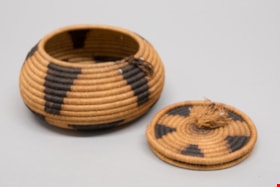
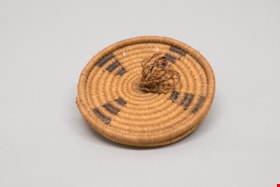
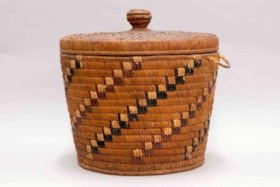
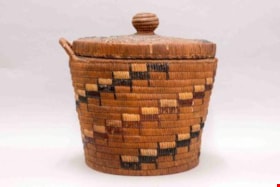
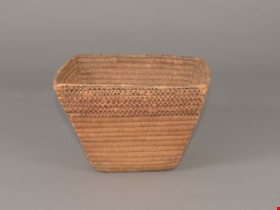
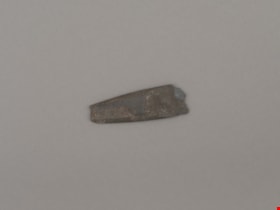
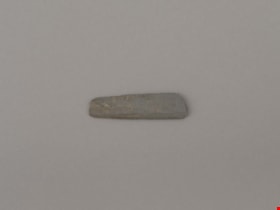
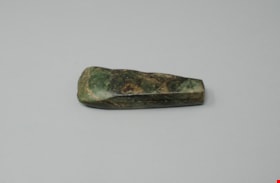
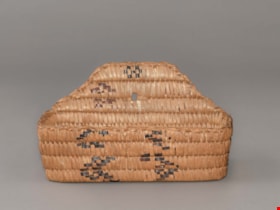
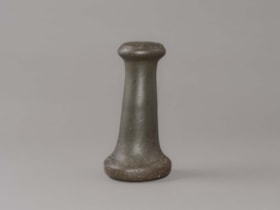
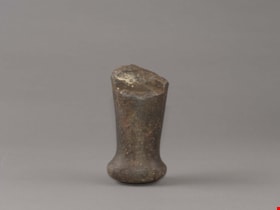
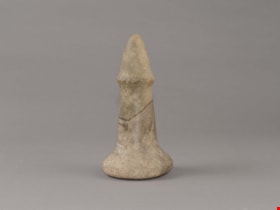
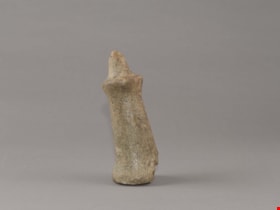
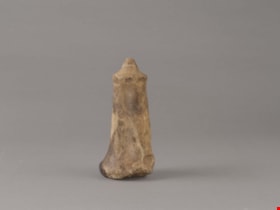
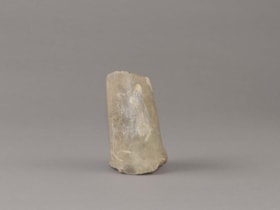
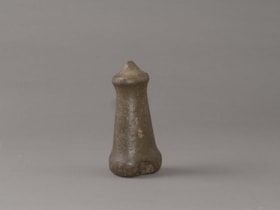
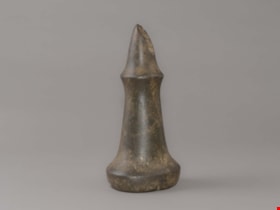
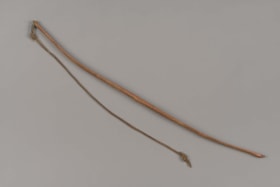
![Interview with Joanne Smith, [1986-2023] (interview content), interviewed 11 May 2023 thumbnail](/media/hpo/_Data/_BVM_Sound_Recordings/Oral_Histories/2023_0016_0005_001.jpg?width=280)